What to Expect When Your Loved One is in Hospice

End-of-life care issues are never easy to discuss, but these conversations are important. Families should understand the complexities involved in carrying out the wishes of loved ones who may be terminally ill. Many Maryland families with a loved one unlikely to recover from serious illness may be unaware of the benefits of hospice care. It’s helpful to know what hospice care encompasses, including who benefits, where patients can access care, when to seek care, what services a patient and family can expect after enrollment and who pays for it all. Knowing what to expect when your loved one is in hospice can help you decide whether to use hospice services.
What Is Hospice Care?
Hospice care, or end-of-life care, focuses on helping people who have 6 months or less to live make the most of what time they have left. Hospice care employs strategies that provide comfortable end-of-life experiences for individuals with terminal illnesses. The purpose of hospice is neither to help people pass quickly nor to help them hold on to life indefinitely. Hospice helps individuals maintain dignity and comfort by treating the symptoms of a life-limiting condition.
People typically think of hospice care as a service for individuals with terminal cancer. However, several conditions can result in patients and their loved ones deciding that hospice care is the logical choice when health care providers have exhausted treatment options. Individuals with dementia, heart disease, kidney disease and other conditions may also be candidates for hospice care.
What to Expect When Your Loved One is in Hospice that will Help You be Prepared
Where Is Hospice Care Provided?
Hospice care isn’t limited to a specific place. Hospice programs can provide care to patients at home, in assisted living centers and at long-term care facilities. The hospice care team recommends hospital admission when staff can’t manage a patient’s symptoms in one of these settings. A patient may benefit from routine home care, inpatient hospice care, continuous home care or respite care.
Routine Home Care
The most common level of care is routine home care, which typically involves administering pain medication and treating nausea and vomiting. Patients receiving regular home care are usually in stable condition.

Inpatient Hospice Care
Individuals receiving home care sometimes need inpatient services when they experience a crisis, such as pain or other symptoms that become difficult to control. Inpatient care occurs in a freestanding hospice facility, hospital or nursing home.
Continuous Home Care
Similar to inpatient hospice care, continuous home care is for short-term crisis management of pain or other symptoms.
Respite Care
Sometimes families need a break from caring for a family member with a life-limiting condition. Respite care is a program for caregivers. Offered in hospice facilities, hospitals or nursing homes, respite care provides quality assistance for a dying person while allowing family members to handle other responsibilities or de-stress by taking a brief vacation.
Palliative Care
To distinguish the two, hospice is not the same as palliative care. When a person with a severe illness enrolls in hospice with a palliative care organization, they have a team assigned to address their needs. A physician oversees the care, but palliative care teams may include nurses, nutritionists, social workers and chaplains. Palliative care is for any stage of illness and can be curative, so it’s not dependent on prognosis. Palliative care aims to improve the patient’s quality of life by treating conditions such as appetite loss, anxiety, depression, insomnia, nausea and pain. A patient who receives palliative care may get better.
When Should Families Seek Hospice Care?
It’s human to hope for the best regardless of a loved one’s medical condition. Many families and their loved ones who face imminent death may not understand that early hospice care can provide a better quality of life during the dying process. When a doctor determines that an individual has a terminal disease, there’s no need to put off hospice care. Early admission can comfort the patient and loved ones as death approaches. As a result, family members can focus on spending time with a loved one in hospice.

What Happens During Hospice Care?
Hospice offers comforting interventions and compassionate care to help patients make the most of their time, regardless of where hospice care occurs. When a family has a loved one in hospice, the attending physician oversees the hospice care plan, and nurses work directly with patients and their families. A hospice nurse monitors the patient’s symptoms and keeps the family informed of the individual’s status. Social work staff connects patients and their families to community resources they might need.
Patients requiring help with bathing, dressing and other personal care activities get assistance from certified nursing assistants or home health aides. Chaplains and other faith community representatives can offer spiritual support to patients and families during a loved one’s final days. Volunteers can also help families with errands, provide transportation or sit with a patient to give caregivers a break. In a hospice facility, volunteers and donors may provide snacks and other food for families during visits with loved ones.
Once a loved one has passed, hospice offers bereavement support. Bereavement counselors can help family members work through their grief and find ways to cope with their loss.
Who Pays for Hospice Care?
Medicaid, Medicare, private insurance and veterans benefits typically cover the cost of hospice care. Hospice care is needs-based, so hospice organizations usually work with patients and families regardless of their ability to pay.
If your loved one has a terminal illness and needs end-of-life care, we’re here to assist. Residents of our memory care facilities in Maryland can receive hospice care without leaving the site. We tell families what to expect and help them with the hospice enrollment process. Contact us using our convenient online form, or call us at (301) 384-4017 to learn more.




